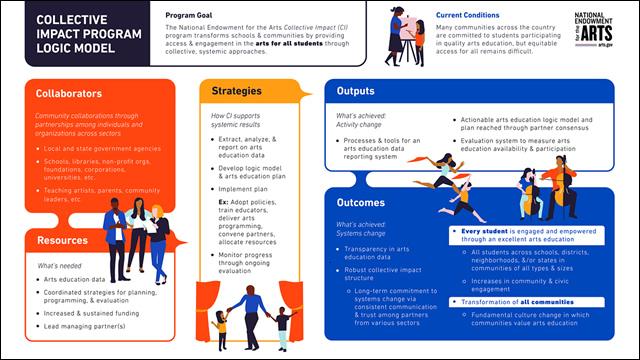GRANTS FOR ARTS PROJECTS: Arts Education Collective Impact Grants
Collective Impact Resources:
- Previously awarded NEA Arts Education Collective Impact grants
- NEA podcast episode featuring Collective Impact grantee Dr. Lisa Donovan, Berkshire Regional Arts Integration Network
- Leveraging Change: Increasing Access to Arts Education in Rural Areas
- Arts Education Data Toolkit
- Using State Data Systems to Report Information on Arts Education
- 50-State Comparison of Arts Education Data and Reporting
- Case Studies on Arts Education Data Initiatives in California, New Jersey, and Texas
- Data Lessons and Resources for the Arts Education Field


